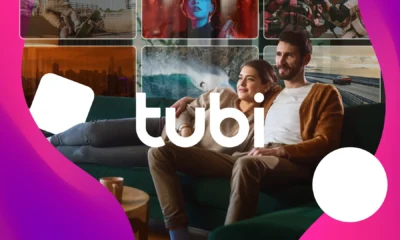In the not-too-distant future, most of the signals we get from third-party cookies and devices will be all but gone. And while identity players are already in-market to fill the void, much of the focus is on overall audience addressability. While addressability is paramount, marketers are also looking for ways they can create personalized experiences without cookies.
As digital marketers, we know that insight is the key to personalization. In lieu of browser and device data, forward-thinking marketers are testing other insight-rich sources to build audience profiles that don’t rely on traditional bread crumb trails. I caught up with a few marketers to see what tools and techniques they are implementing to stay ahead of the game.
CDPs and identity solutions
CDPs and identity graphs build a single view of a user, including explicit and implicit interests and preferences. This singular identity stitches together a host of signals to deliver a 360-degree view to power personalization without third-party cookies.
Working with an established CDP or identity platform keeps all the identifiers related to a customer in one place, including personally identifiable information (PII) like usernames and phone numbers, as well as non-PIIs signals like first-party cookies and publisher IDs. Marketers can leverage these CDPs or identity graph databases to build omnichannel views for customers and prospects, enabling them to create personalized ads and messaging across various touchpoints.
Marketers who work with CDPs or identity platforms can capture data from over a hundred touchpoints, and build a unified view across their entire CRM to drive personalized messaging. Using advanced analytics and modeling, marketers can create a variety of personalization scenarios based on different channels, intent signals, and propensity scores for each user. And connecting the ad identifiers using a virtual ID allows for not only converged addressability but also helps to drive cross-channel personalization.
Second-party data
Another way to get around the loss of third-party cookies is to start building second-party data. This type of incremental audience data is created when a marketer combines their data with another brand or publisher data set to yield new insights and audiences beyond what is available in their own CRM or subscriber database.
The advantages of building substantial second-party audiences allow a marketer to expand their consumer data pool and, more importantly, provide access to more relevant consumer data than marketers would get with third-party cookies or data. Because second-party data involves combining similar yet disparate data sets, the yield is high on actionable insights. It will almost always perform better than a marketer who pays for aggregated third-party data.
This strategy is most useful for more prominent brands or marketers who have built an extensive database of customers. Finding a willing partner might not be easy for small businesses or newer companies that haven’t had the chance to build up their own first-party data. To make this strategy work, you must find a partner to share data with you and then disclose the relationship on your website if you share your customers’ data with another company. Building these second-party audiences has become a cornerstone service for data clean rooms or cloud service providers, including Infosum and Snowflake.
Read next: Why we care about data clean rooms
Contextual advertising
For years, we’ve seen contextual targeting touted as an alternative to cookies. This approach focuses on the content consumed — the context of the blog post, video, or other content the person is engaging with — rather than personal information.
As a result, there’s little to no risk around data privacy. Yet, digital marketers can still offer highly personalized content and ads.
While contextual advertising is nothing new to marketers, what has changed is that AI is now used by more advanced providers that can get granular with contextual targeting. Marketers have a continuum of targets they can build personalization around, including metadata, titles, related keywords, comments, and more. By mining this information and looking for signals, marketers gain in-depth insights into their customers that are used for cross-channel personalization and messaging.
This ever-evolving world of contextual advertising and personalization may require marketers to brush up on their skill sets and learn more about how it works today and how it can be leveraged not only for addressability but as a tool for personalization. And, unlike older contextual marketing models that relied heavily on keywords, new contextual targeting tools rely on natural language processing and image recognition.
These more recent algorithms can also grasp the sentiment of pages and apps with unprecedented speed and reliability. Altogether, this enables marketers to display personalized ads in an environment that is both highly relevant for their potential customers and safe for their brands.
Get the daily newsletter digital marketers rely on.
Location and interest-based targeting
Remembering that high-quality intent data for personalization can be captured offline is more important than ever. Where your customers and prospects go or hang out regularly can be equally crucial for insights and personalization opportunities.
Location data companies like Safegraph, Simple.fi and Factual create rich audience profiles based on pre-determined points of interest and stitch them to their ID, or into cookie-free IDs like UID, for cross-channel and personalized targeting. These companies often have thousands of locations mapped, including quick-serve restaurants, airports, retail stores and golf courses, to name a few.
Real-world insights from location data can drive personalization using explicit information, including the type of store or location visited, to inferred demographic, affluence and other information to allow for an additional lever to use when developing personalization models.
In much the same way location-based data provides a slightly more “meta” approach to personalization, interest-based advertising bundles website visitors into broad content topics based on a visitor’s behavior. The most talked about of these interest-based targeting and personalization platforms is Google’s most recently proposed concept, Topics, which replaces its initial strategy, Federated Learning of Cohorts (FLoC). The idea behind Topics is that the browser learns about users’ interests as they surf the web and shares their top interests with participating websites for advertising purposes. All this happens behind their walled garden by categorizing the websites a user visits into a limited set of around 350 broad topics, such as gym-goers or sports car enthusiasts.
When a user visits a website that supports the Topics API, the browser will choose up to three topics on their device from their most frequent topics in the last three weeks and share them with this website. The website and its advertising partners can then use these topics to determine which type of personalized ad to display.
While the jury is still out on Topics, Google claims that Topics is more private and offers greater transparency and user control than FLoC and cookie-based targeting. Still, many specifics of the concept are yet to be released.
Better first-party data for personalization
If you want to truly deliver personalized experiences, you need to know who your users are, and an email address is a great first step to building out their profile.
Amp up your user registration. Utilize all the touchpoints site where exchanging information for newsletter sign-ups, cart check-out, discount codes or loyalty programs.
Build more robust customer profiles. Start small but capture as much information as you can about your customers. Integrate additional data collection touchpoints. Follow up with new email subscribers with quick buttons to capture preference data to better target content and products.
Engage with email and SMS marketing. Make the most out of email and text message to drive up customer engagement. Send personalized offers and content to users based on their behavior on your site and follow up personalized SMS for special sales, promotions, and discounts.
All in all, the demise of the third-party cookies and the constraints on device-level data doesn’t mean an end to ad personalization; marketers will be utilizing a host of alternate data and IDs to drive cross-channel personalization. Combined, these new tools and tactics will allow marketers to continue having personalized conversations with their customers and prospects.
Opinions expressed in this article are those of the guest author and not necessarily MarTech. Staff authors are listed here.


















![How to Use AI For a More Effective Social Media Strategy, According to Ross Simmonds Download Now: The 2024 State of Social Media Trends [Free Report]](https://articles.entireweb.com/wp-content/uploads/2024/04/How-to-Use-AI-For-a-More-Effective-Social-Media.png)


















You must be logged in to post a comment Login